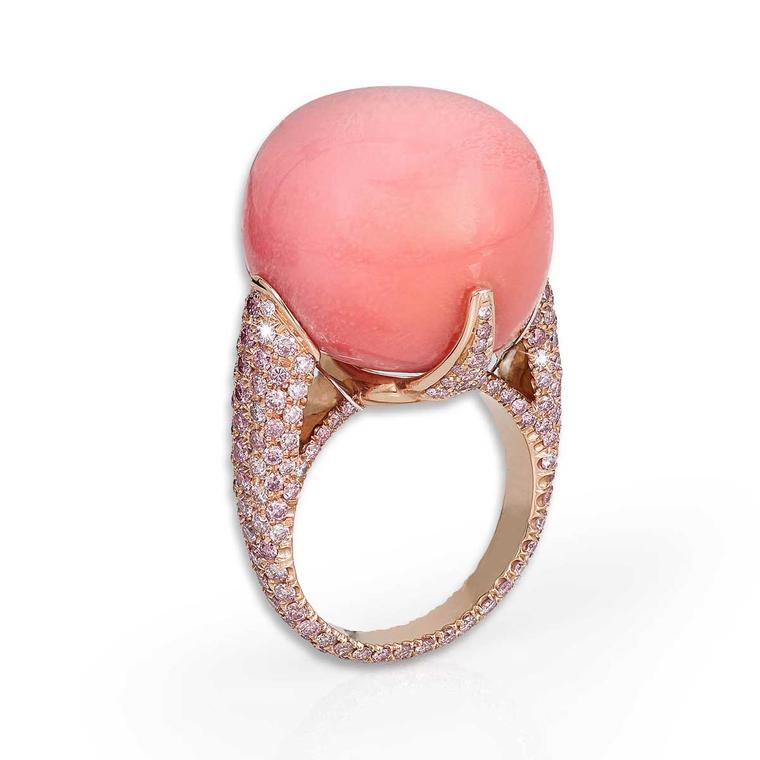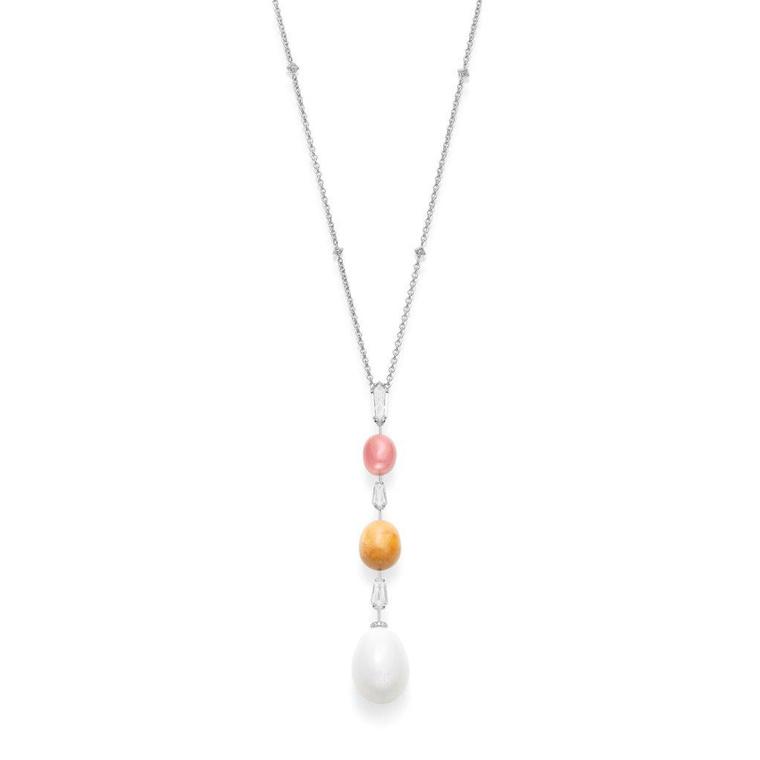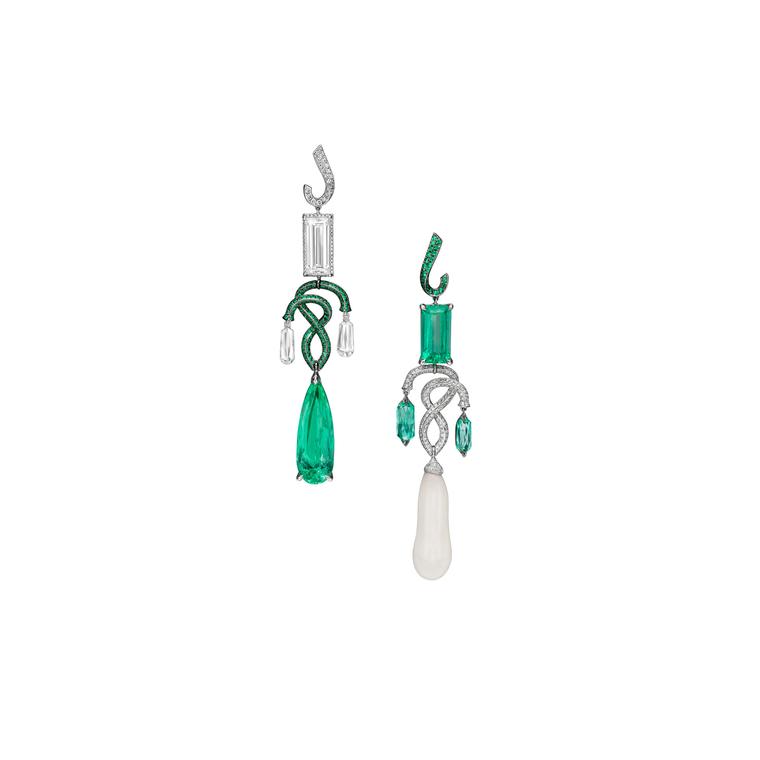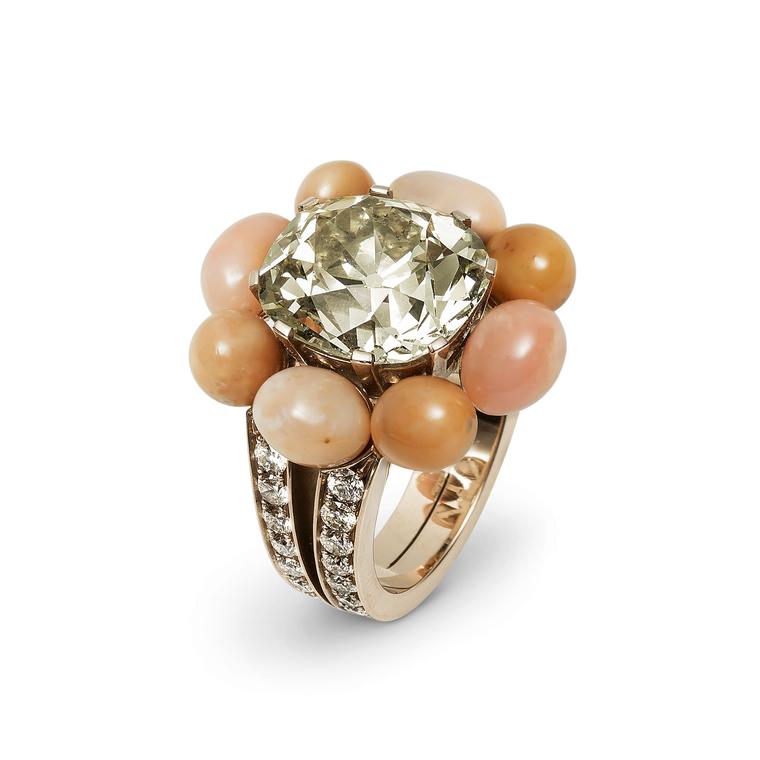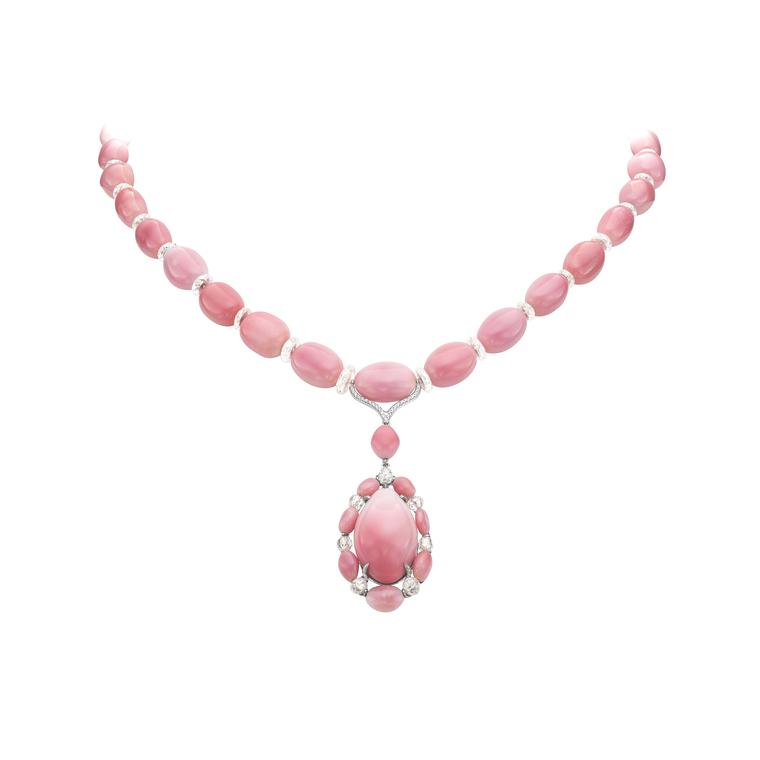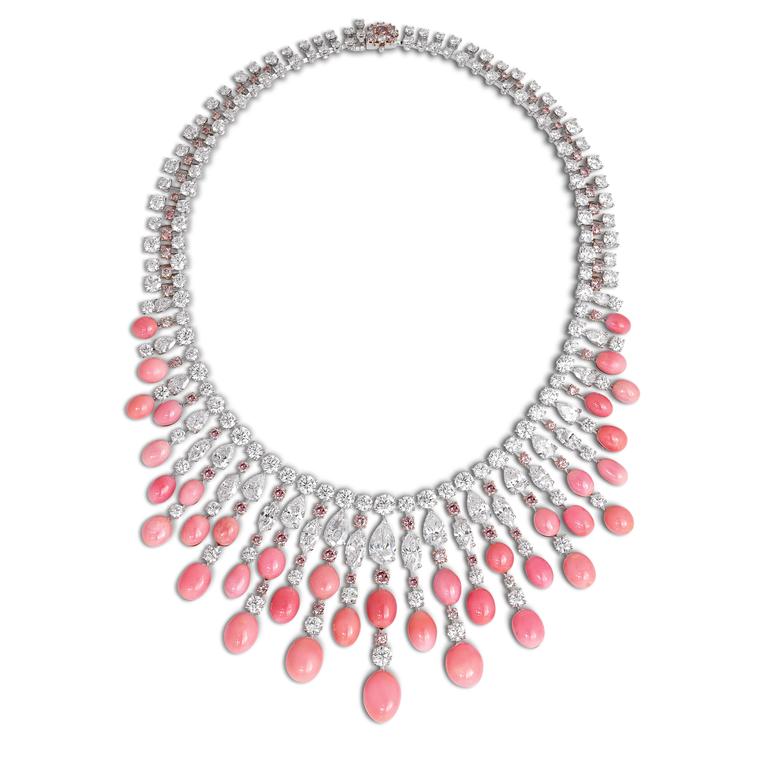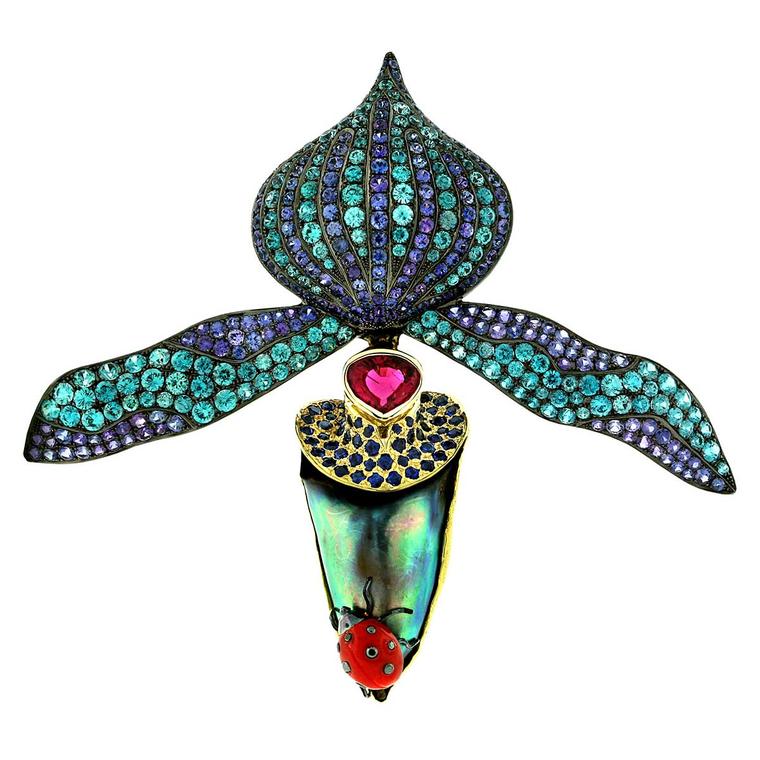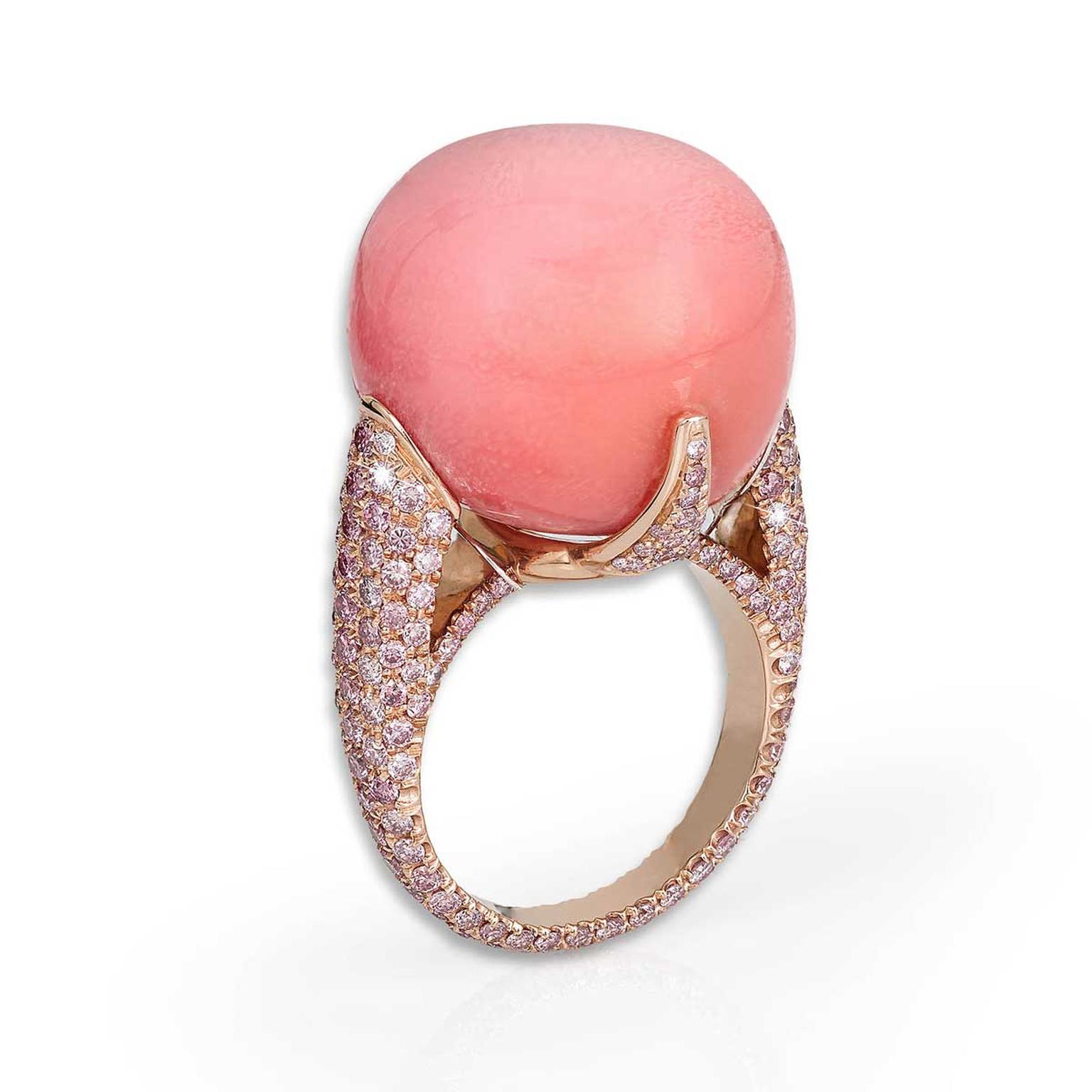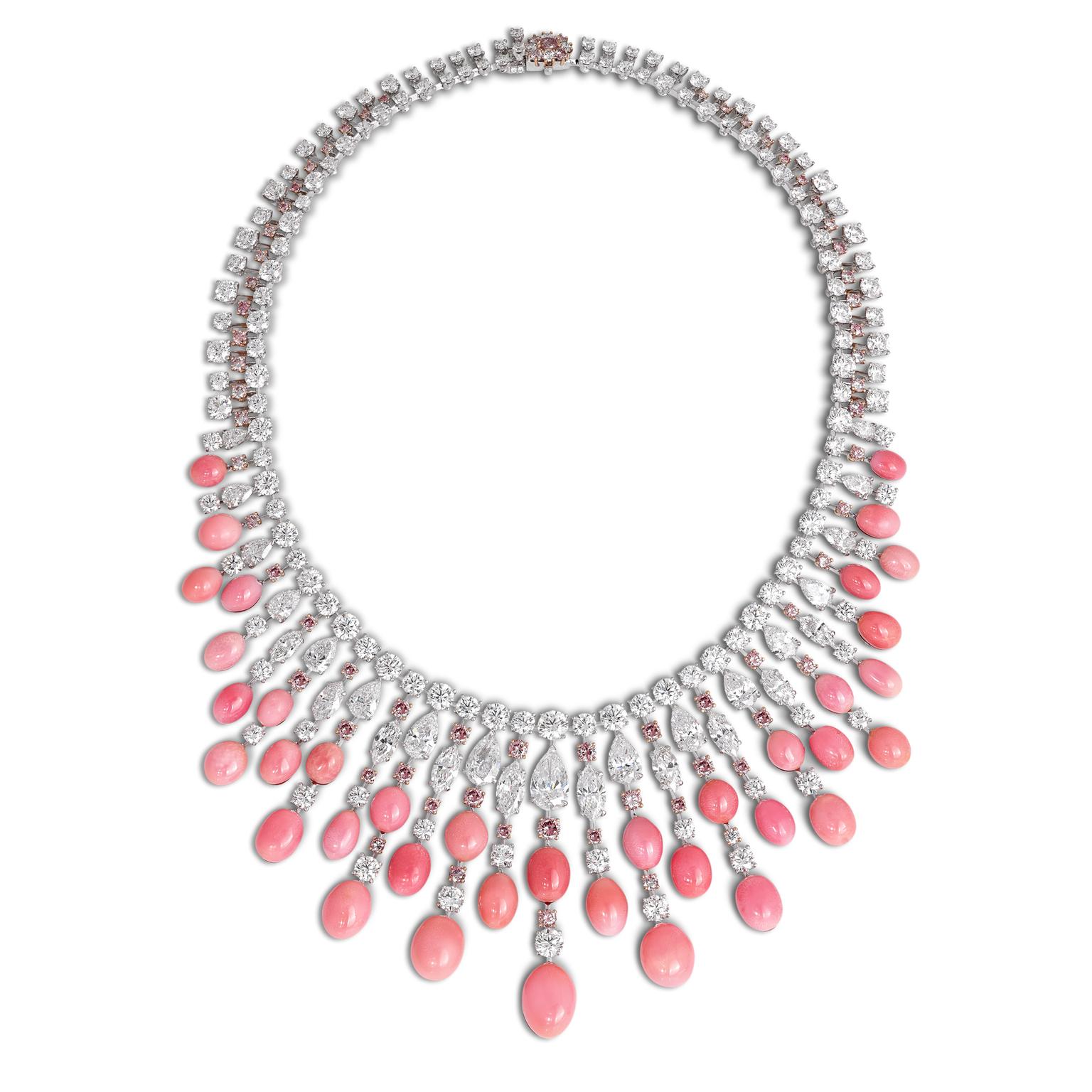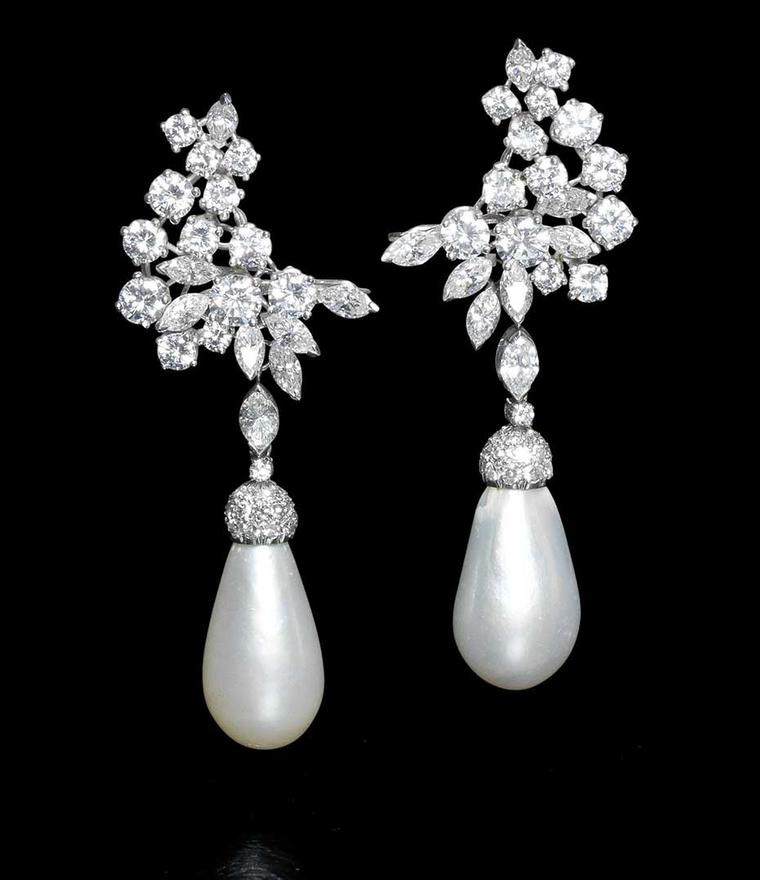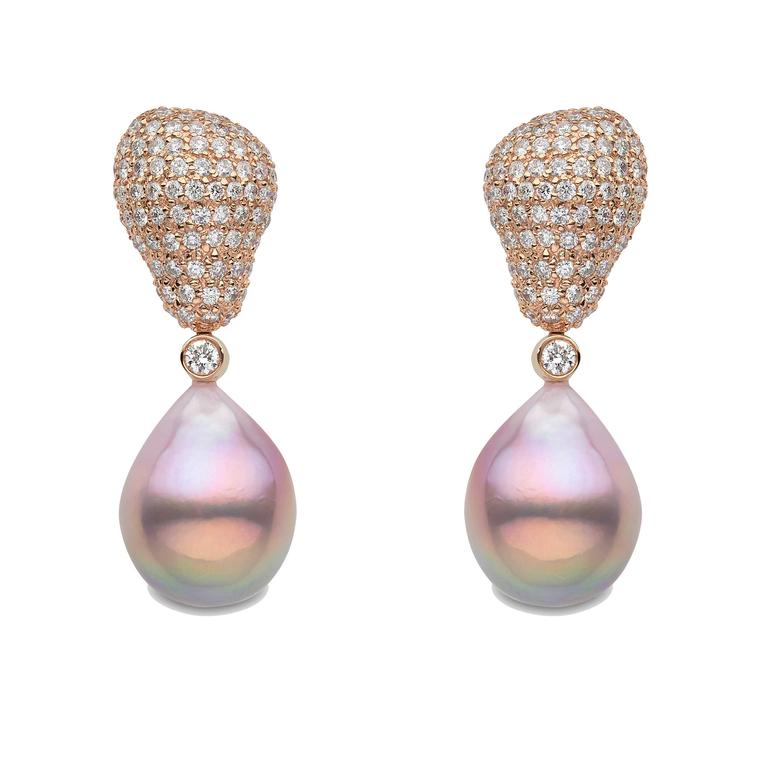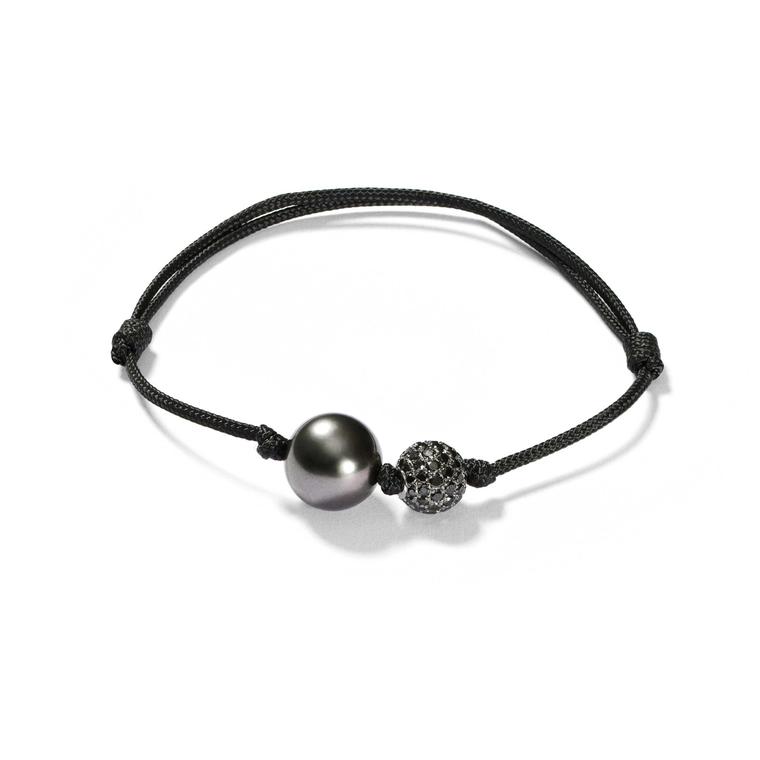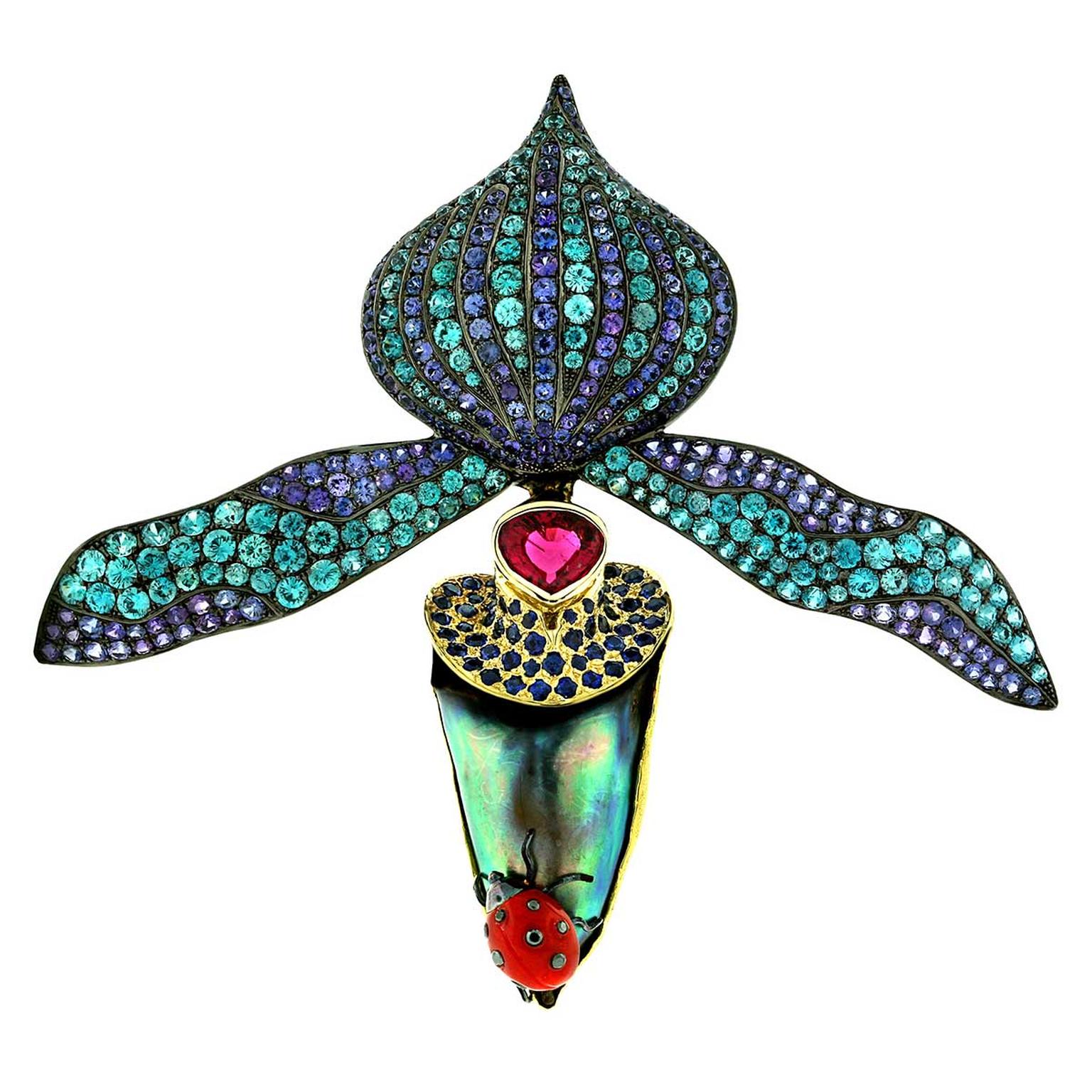
Traditionally, the most desirable pearls were considered to be symmetrically round white spheres, which were uniform in both size and colour. However, with the growth of the cultured pearl industry, our attention has turned towards an altogether more exceptional breed: rare natural pearls.
These weird and wonderful freaks of nature include the very rare melo melo, abalone and conch pearls, all of which are increasingly making their way into pearl jewellery that is a far cry from the traditional “one strand or two” white pearl necklaces.
Strictly speaking, real pearls are only produced by oysters through the secretion of nacre in response to an irritation, such as a grain of sand, entering its shell. While even gemmologists tend to refer to the conch and melo melo as pearls, they are actually non-nacreous gems formed by a substance composed mainly of calcite. They may lack the iridescence of nacreous pearls, but their natural, organic beauty is no less spectacular.
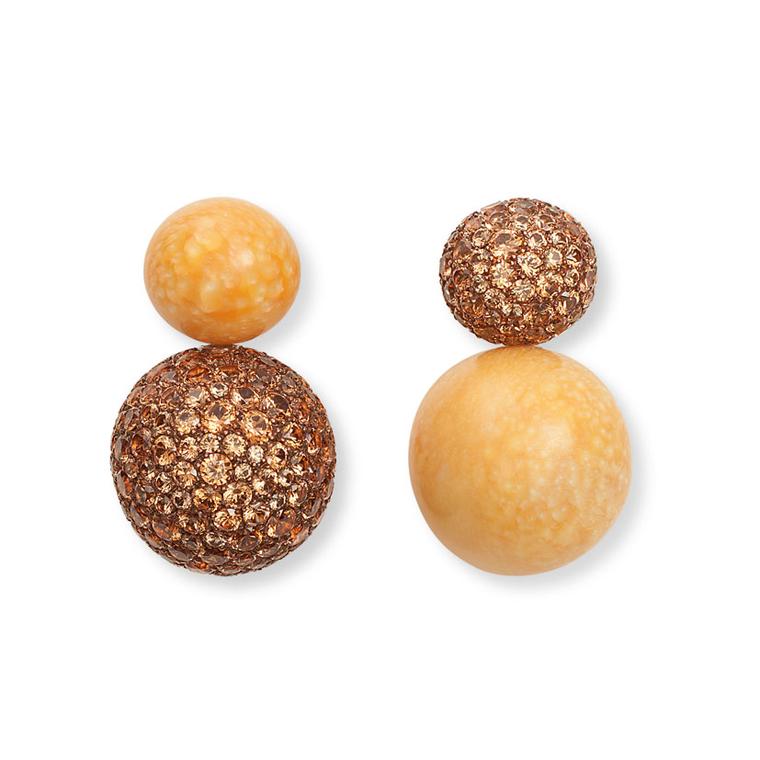
Melo melo pearls, left, are produced by a sea snail that lives in the waters off Southeast Asia and, in a similar way to “regular” pearls, they are created when a foreign substance enters the snail’s shell. Ranging in colour from light tan to dark brown, with orange being the most desirable, melo melo pearls are incredibly rare. So far, all attempts to culture them have failed so they are only available in their natural formation. A number of jewellers, including Hemmerle, Boghossian and YOKO London, have incorporated glowing tangerine-hued melo melo pearls into stunning, contemporary jewellery.
Conch pearls are also extremely rare non-nacreous pearls, which cannot be cultivated and are only found in one in every 10,000 Queen conch molluscs. As a result, conch pearls, especially those in the most popular soft pink colour, are incredibly valuable and even a pea-sized gem can fetch as much as US$120,000. Mikimoto recently launched a collection of conch pearl jewellery, and the distinctive pink pearls have also been incorporated into jewels by David Morris, who is an expert in this rare variety of pearl.
Find out why conch pearls are so rare here
Clams can also produce non-nacreous pearls, with a porcelain-like surface that looks stunning when contrasted with sparkling coloured gemstones. Both clam and conch pearls often have an iridescent flame-like pattern caused by concentrically arranged calcium carbonate platelets.
The most colourful and rarest pearls are produced by the abalone mollusc, which lives in rocky, coastal waters around the world. Shifting in colour from vibrant greens, blues, pinks and silver, abalone pearls, top of article, are usually baroque and often shaped like a tooth or horn. Natural abalone pearls take between eight and 10 years to form, and gems measuring more than 15mm are only found in every 500,000-900,000 molluscs. Culturing these rare pearls is extremely difficult as the abalone is haemophiliac and the molluscs will literally bleed to death if they are nucleated in the same way as oysters.
While the beautiful iridescent abalone pearls look stunning when set into avant-garde pearl jewellery, their rarity means that decent-sized gems are usually only featured in the most expensive one-of-a-kind creations.


